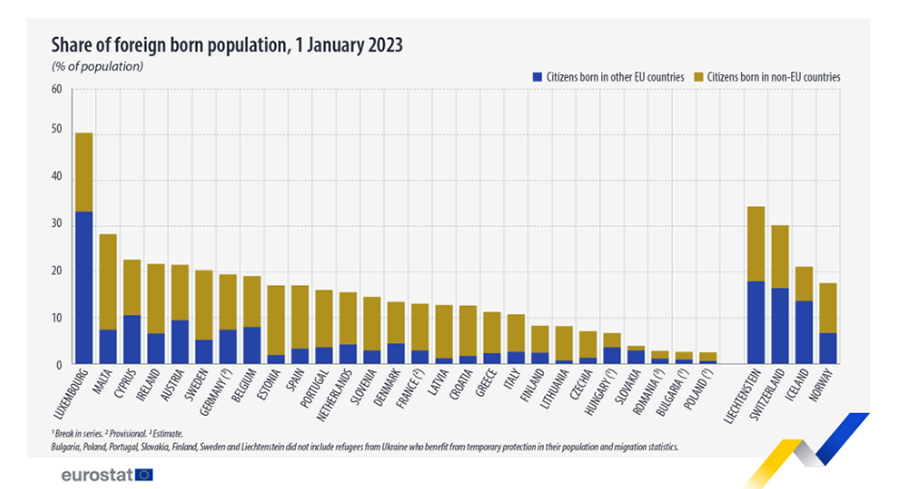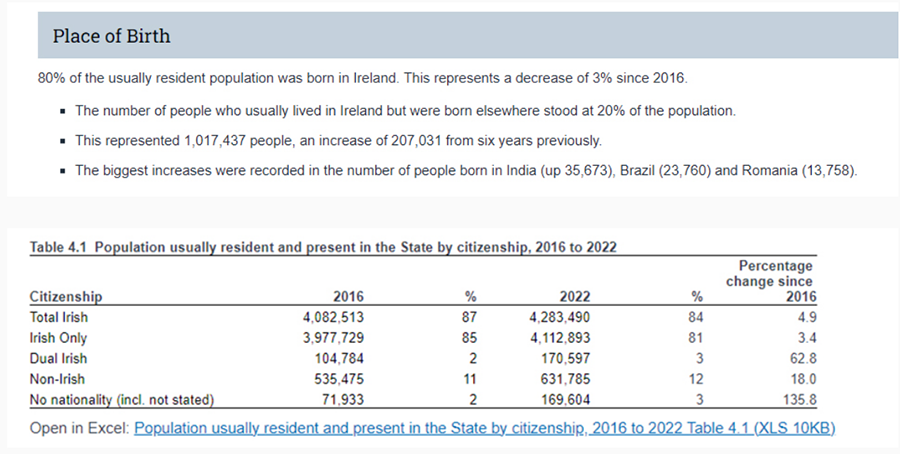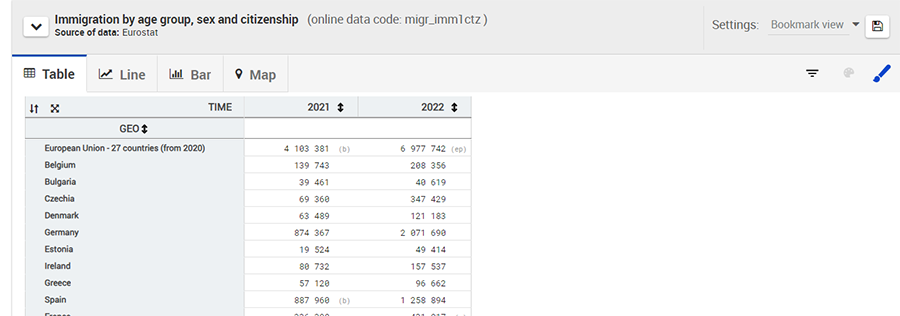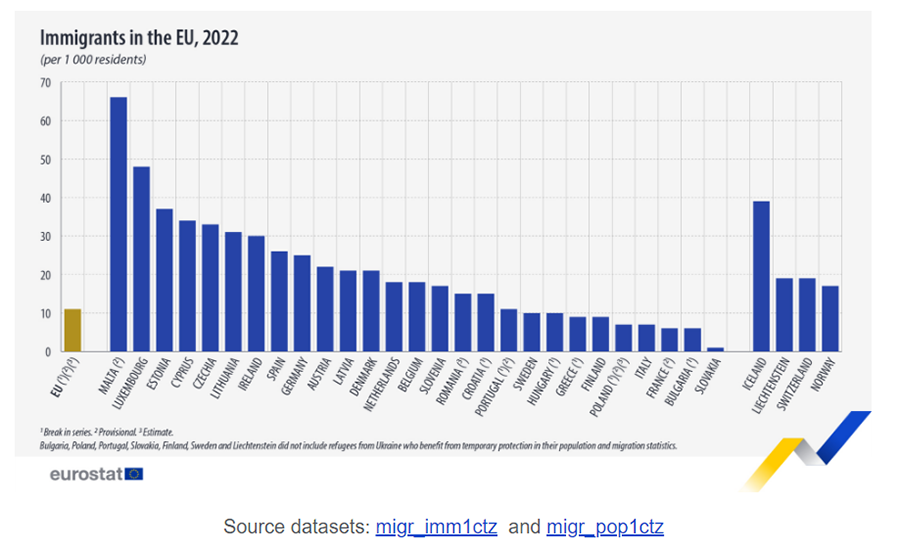Newly published EU statistics on immigration show that the proportion of the population of the Irish state who were born overseas reached 22% in 2023.
Ireland has the fourth largest non-national population of all 27 member states, headed only by Luxembourg, Malta and Cyprus.

The figures published by Eurostat on Wednesday show that in 2023 of the 5,271,395 people living in the Irish state, that 1,150,090 had been born in a “foreign country.” That amounts to 21.82%.

This represents a further increase of 132,653 on the 1,017,437 who were officially recorded in the 2022 Census as having been born outside of the country.
On the day of the Census, a total of 1,017,437 people living in the state were recorded as having been born overseas. That represented 19.76% of a total population of 5,149,139 in the country at the time.

The proportion of the population born overseas had increased substantially over the course of one year, and since then tens of thousands more people have arrived in the state either as persons seeking asylum or as persons with work permits and many of their dependents.
The trend can be seen starkly when we look at the proportion of the growth in the population of the state that is made up of immigrants.
According to the official EU statistics, the population of the state grew from 5,060,084 on January 1, 2022 to 5,271,395 on January 1, 2023. That figure corresponds to the estimate of the Central Statistics Office (CSO) here in April 2023.
The population of the state had increased by 211,311 in that period. What is interesting, not to say even startling, about that is the proportion of the increase that was solely made up by inward migration.
According to the EU statistics, as set out in the table below, 157,537 people migrated to Ireland from overseas between 2022 and 2023. Which means that of a population growth of 211,311 that 75% of that growth was accounted for by immigration. If that trend continues, and it looks set to increase rather than otherwise, then we are on course to have another 2 million persons who were born overseas living here around 2050.
The percentage of the population increase made up of immigrants corresponds closely to the statistics on the issuing of Personal Public Service Numbers (PPS) which as we have reported shows that around 23% are issued to people born in Ireland.

One of the usual responses to this picture of the radically changed and changing demographics of the Irish state is “Oh, most of the people coming back are Irish people.” Well, not only are most of the people coming to Ireland and recorded as part of the migration statistics not Irish, but the number of Irish citizens who are leaving is greater than the number of Irish citizens who are returning.
This fact is confirmed by the steadily upward curve of the proportion of the population who are born overseas.

The table above also shows that the Irish state had one of the highest per capita intakes of immigrants in 2022. The per capita intake stood at 30 per 1,000 for Ireland is almost three times the EU average and among the very highest of all member states.
If all of these trends continue, and they will, then the Irish state is on course to have a non-national population of a third within the next decade.
If the current rate of population growth continues beyond that, and that percentage made up by immigrants continues to account for 75% of that growth, we could have a population of 10 million by 2050 of which close to half would have been born overseas.
I was reminded, apropos of the mentality that believes this is perfectly natural and welcome, of an article published more than three years ago by the Irish Independent. It quoted James Hegarty of the CSO who claimed that “an additional 4 million migrants would be needed” before 2051 to pay the old age pension.
Is there any other serious state on the planet that regards this type of thinking on the part of administrators and politicians and others to be acceptable – or even reasonable? To make matters worse, this is happening while we’re seeing an exodus of tens of thousands of young, educated and even employed Irish persons – and an attack on the character of anyone who dares question this insanity.
Ponder that over your post Lent “gesture egg” or gesture pint.